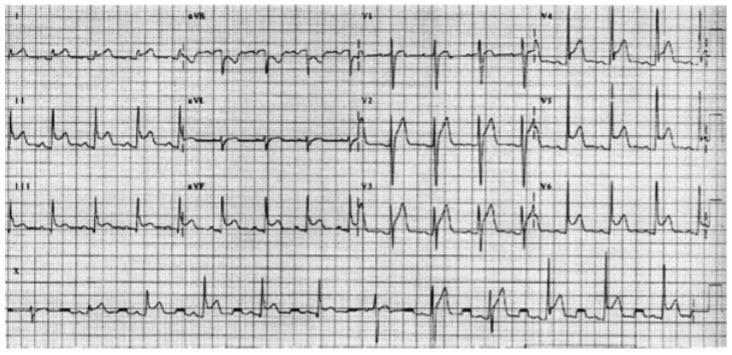Question 20#
A 45-year-old woman with a history of treated carcinoma of the breast presents to the local emergency department with a few days of severe chest pain. In the emergency department, she appears ill and pale and in moderate discomfort. Her BP is 135/60 mmHg; her respiratory rate is 24 breaths per minute; her HR is 82 bpm; and her temperature is 100.8°F. The resident on call reads her chest X-ray (CXR) as unremarkable. Her ECG is shown in Figure below.

What is the most reasonable next step?
A. Give aspirin and nitroglycerin and prepare to administer thrombolyticsB. Call the cardiac intervention team and rush the patient to the catheterization laboratory for emergency coronary intervention
C. Give a nonsteroidal anti-inflammatory medication
D. Discharge the patient and refer her for a gastroenterology follow-up as an outpatient
Correct Answer is C
Comment:
Give a nonsteroidal anti-inflammatory medication. The clinical presentation of a few days of severe chest pain does not favor an acute MI. Furthermore, the ECG tracing supports the diagnosis of pericarditis. Therefore, cardiac catheterization and thrombolytics are not appropriate. The only reasonable answer is to start the patient on anti-inflammatory medications and obtain a TTE to rule out pericardial effusion.